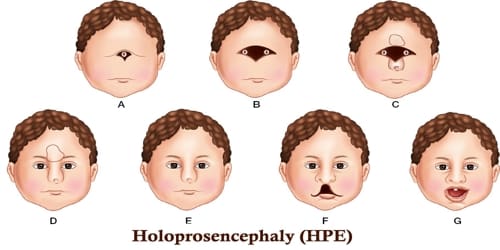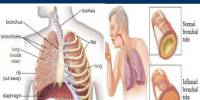Our inquiries have changed as the COVID-19 pandemic has progressed, from “How do I know if I’m infected?” to “How strong is my immunity?” to “Which type of the virus do I have?”
And it’s likely that we’ll keep asking those questions, frequently simultaneously, as new variations continue to appear. There is now a way to quickly find out the answers to all of them without having to send samples to a lab.
The Wyss Institute for Biologically Inspired Engineering at Harvard University has developed a new point-of-care diagnostic tool that combines its eRapid and SHERLOCK technologies into a single, postcard-sized system that can simultaneously detect the presence of SARS-CoV-2 RNA and antibodies against the virus in a patient’s saliva, as well as possibly a number of other biomarkers.
“This diagnostic can enable cheaper, multiplexed monitoring of infection and immunity in populations over time, at levels of accuracy that are comparable to expensive lab tests,” said co-first author Devora Najjar, a graduate student at the MIT Media Lab and the Wyss Institute. “Such an approach could dramatically improve the global response to future pandemics, and also provide insight into which treatment individuals should receive.”
In a recent study that appeared in Nature Biomedical Engineering, the prototype device is described.
Novel chemistry for a novel virus
The Wyss Core Faculty members Jim Collins, Ph.D., and Don Ingber, M.D., Ph.D., who is also the Institute’s Founding Director, worked together in their respective labs to create the diagnostic.
The SHERLOCK team, led by Collins and Helena de Puig, Ph.D., a Wyss Postdoctoral Fellow, and the eRapid team, led by Ingber and Wyss Senior Staff Scientist Pawan Jolly, Ph.D., realized that while SHERLOCK-based diagnostics can detect molecules with exquisite sensitivity, they were inherently constrained by their fluorescence-based readout system.
They could develop a diagnostic with lab-level accuracy that could be utilized outside of a lab if they could find out how to convert the molecular detection of a CRISPR-based system like SHERLOCK into an electrochemical signal like that produced by eRapid. They started creating this hybrid device, and they decided to use it to treat Lyme disease.
The integration of the PNA-based assay with the poly-HRP-streptavidin/TMB reaction chemistry that we created for this device allowed us to detect the presence of SARS-CoV-2 with four times higher sensitivity than our original fluorescence-based SHERLOCK technology, and produced results in about the same amount of time.
Joshua Rainbow
They had it working after a few months. Then the COVID-19 pandemic hit.
“In the early days, everyone was working on developing diagnostics that could detect either the SARS-CoV-2 virus or antibodies against it, but not both. We knew that we could successfully detect the presence of DNA and RNA molecules electrochemically, thanks to our work on Lyme disease. We decided to figure out how to multiplex that with antibody detection in order to create an all-in-one test to help track infections and fight the pandemic,” said de Puig, a co-first author of the paper.
It was difficult to develop a platform that could combine the detection of viral RNA and human proteins. The group had to devise a way to carry out two distinct and highly dissimilar molecular reactions simultaneously and then combine them into a single reporting system so that the outcomes could be read simultaneously.
They used saliva as their sample material because it contains both virus particles and antibodies. The device had to be able to extract, concentrate, and amplify viral RNA from a saliva sample, mix it with CRISPR reagents, and then transfer the resulting solution to the eRapid chip element of the diagnostic for detection for the SHERLOCK portion of the diagnostic, which looks for SARS-CoV-2 RNA.
The group developed a microfluidic system with several reservoirs, passageways, and heating devices to autonomously mix and transport materials inside the prototype device without requiring user input.
Saliva and an enzyme that dissolves any viruses’ outer envelopes to reveal their RNA are combined in the first chamber. After that, the material is fed into a reaction chamber where it is heated and combined with loop-mediated isothermal amplification (LAMP) chemicals to amplify the viral RNA.
A mixture comprising SHERLOCK reagents is introduced to the chamber after 30 minutes of amplification, and the sample is then pumped onto an eRapid electrode.
Single-stranded (ss) DNA molecules with biotin attached bond to a molecule known as peptide nucleic acid (PNA) on the electrode’s surface in the absence of SARS-CoV-2 genetic material in the mixture.
Following the biotin’s association with poly-HRP-streptavidin, another molecule in the combination, tetramethylbenzidine (TMB), precipitates as a solid out of the liquid solution. The electrode’s electrical conductivity changes when the solid TMB touches it.
This difference in electrical current flow via the electrode, which shows that the sample is virus-free, is used to identify the change. However, the SHERLOCK mixture’s CRISPR enzyme also destroys any SARS-CoV-2 genetic material that might be present in the saliva sample along with the ssDNA.
The biotin molecule is cut away from the ssDNA by this action, which prevents the ssDNA from binding to PNA from starting the chain of events that results in the TMB precipitating onto the electrode. As a result, the electrode’s conductivity remains unaltered, signifying a successful test.
“The integration of the PNA-based assay with the poly-HRP-streptavidin/TMB reaction chemistry that we created for this device allowed us to detect the presence of SARS-CoV-2 with four times higher sensitivity than our original fluorescence-based SHERLOCK technology, and produced results in about the same amount of time,” said co-first author Joshua Rainbow, Ph.D., a former Visiting Graduate Student at the Wyss Institute who is now a doctoral student at the University of Bath. “It was also able to detect the presence of viral RNA with 100% accuracy.”
Greater than the sum of its parts
The S1 subunit of the Spike protein (S1), the ribosome binding domain inside that subunit (S1-RBD), and the N protein, which is present in the majority of coronaviruses, were all used to customize the remaining three eRapid electrodes. Patients can develop antibodies against these antigens (N).
These antibodies bind to their partner antigens on the electrodes if a patient’s saliva sample contains one or more of them. The target antibody will then bind to a secondary antibody that is biotin-attached, starting the same poly-HRP-streptavidin/TMB reaction and altering the conductivity of the electrode.
Utilizing samples of human plasma from patients who had previously tested positive for SARS-CoV-2, the researchers put these antibody-specific sensors to the test. Over 95% accuracy was achieved in the system’s ability to differentiate between antibodies to S1, S1-RBD, and N.
“Being able to easily distinguish between different types of antibodies is hugely beneficial for determining whether patients’ immunity is due to vaccines versus infection, and tracking the strength of those different immunity levels over time,” said Sanjay Sharma Timilsina, Ph.D., a former Postdoctoral Fellow at the Wyss Institute who is now a Lead Scientist at StataDX.
“Integrating that with viral RNA detection in a portable, the multiplexed diagnostic platform provides a comprehensive view of a patient’s health both during and after an infection, which is essential for implementing public policy and vaccination strategies.”
For use in neurological, cardiovascular, and renal applications, StataDX is commercializing eRapid. Finally, utilizing saliva from SARS-CoV-2 patients, the investigators evaluated the combined viral RNA and antibody electrodes.
They divided the saliva into two parts, adding one to the RNA reservoir and the other to the device’s antibody reservoir. They evaluated the readouts from the electrodes after two hours to be sure they had accurately detected the presence of the antibodies and RNA.
The scientists discovered that the multiplexed chips simultaneously and accurately recognized both positive and negative RNA and antibody samples. Additionally, it was incredibly sensitive, able to identify RNA down to 0.8 copies per microliter.
“Currently, there is a lack of low-cost diagnostic platforms that can enable accurate detection of multiple classes of molecules without requiring a trip to a lab. Our system offers the best of both worlds high accuracy and low cost in a multiplexed platform and could provide a lot of value to both patients and clinicians at the point of care. Plus, it’s easily adaptable to a wide range of applications,” said co-first author Jolly.
The low-cost and user-friendly prototype gadget reduces the amount of steps a patient must take, making it less likely that they will make a mistake. A reusable housing and readout device that a user would maintain in their house might be fitted with customized cartridges to detect antigens and antibodies from various diseases.
“What excites me about this diagnostic device is that it combines a high level of accuracy with a flexible design that could make it a major tool in our arsenal for addressing future pandemics,” said co-senior author Collins, who is also the Termeer Professor of Medical Engineering & Science at MIT.
Collins is also a co-founder of Sherlock Biosciences, which is transforming the SHERLOCK technology of the Wyss Institute into diagnostics for COVID-19 and other disorders.
“I’m very proud of these teams for coming together during a global crisis that ground most activity to a halt, and creating something new and useful that offers great promise for point-of-care diagnosis and management of a broad range of diseases around the world,” said co-senior author Ingber, who is also the Judah Folkman Professor of Vascular Biology at Harvard Medical School and Boston Children’s Hospital, as well as the Hansjörg Wyss Professor of Bioinspired Engineering at the Harvard John A. Paulson School of Engineering and Applied Sciences.
Additional authors of the paper include Mohamed Yafia, Nolan Durr, and Hani Sallum from the Wyss Institute; Galit Alter from the Ragon Institute of MGH, MIT, and Harvard; Jonathan Li from Brigham and Women’s Hospital (BWH), Xu Yu from the Ragon Institute and BWH, David Walt from the Wyss Institute, HMS, and BWH; Joseph Paradiso from the MIT Media Lab, and Pedro Estrela from the University of Bath.
This research was supported by the Wyss Institute for Biologically Inspired Engineering at Harvard University, the Paul G. Allen Frontiers Group, the UK Natural Environment Research Council (NERC) GW4 FRESH CDT, the Fonds de recherche du Québec nature et technologie, Ms. Enid Schwartz, the Mark and Lisa Schwartz Foundation, the Massachusetts Consortium for Pathogen Readiness, the Ragon Institute, and the Harvard University Center for AIDS Research.
















